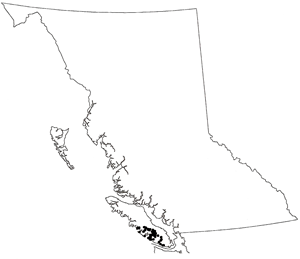This native species is considered an ancient species (Marshall and Fender 2005). McKey-Fender et al. (1994) described this species; John Reynolds has summarized the description as follows: “Length 167-381 mm, diameter 3.2-4.5 mm, segments number 147-204, prostomium tanylobic, dorsal pores absent. Clitellum annular, basically xiii-xviii, except extending to ½ xii dorsally and lacking ventrally in area of male field. Setae separate: AA:AB:BC:CD:DD = 2.1:1.0:1.5:1.8: 8.5 on x and 2.7; 1.0:1.5:1.9:9.9 midbody. DD:U < 0.5 (0.43-0.44). Penial setae small and delicate, 430-570 x 8-9 μ. Male field with glandular bands in grooves 17/18 and 18/19 B to B. Genital markings paired, transverse elongate in 19/20 and 20/21, sometimes unilaterial in 21/22, sometimes missing in 20/21, large, centering just media to A. Proventriculus in iv, with thickened wall almost as conspicuous as gizzard, but soft. Pre-intestinal constriction (xvi). Gizzard entirely in v or partly in vi, 5/6 adherent or even not dissectible from gizzard posteriorly, oesophagus in vii-xv is especially enlarged. Typhlosole xxi to Ixxiv-Ixxxiii, rudimentary, does not project into lumen of the intestine. Holandric, prostates long, confined to xviii but bulging septa, length of gland at least 20 times width, duct slender, nearly straight or looped in a C or S shape, slightly broader ectally. Spermathecae, sexthecal, in vii, viii, and ix, ampulla ovoide to subglobular, duct one-third length of ampulla, spermathecal pores in groves 6/7, 7/8, and 8/9, anterior to furrows, in or lateral to B. Nephropores inconspicuous, irregularly alternating in C or dorsal to D. Colour, young specimens unpigmented, but with age development an orange-brown flush over entire body, especially over dorsum anteriorly and posteriorly.”
Source: Marshall, Valin G. and William M. Fender. 2007. Native and Introduced Earthworms (Oligochaeta) of British Columbia. Megadrilogica 11 (4): 29-52.
